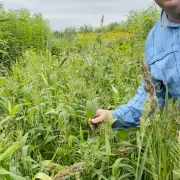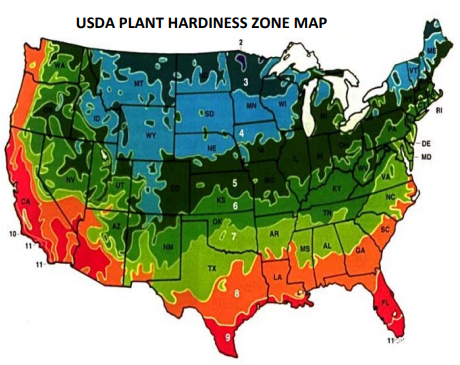Waterfowl Keeper™

Soil Type and Planting Region
Waterfowl Gold works best on clay, silt loam, and sandy loam soils in USDA Hardiness Zones 6 to 11. Areas with more frequent rain or the ability to irrigate are best because they hold water and allow for ponding in your waterfowl impoundment. Shallow flood water acts as a herbicide.
Seed Bed Prep
Rice needs good seed-to soil contact. Start with a clean, uniform seedbed on a moist but not wet soil (avoid rutting soil). To prepare the soil, disk and roll the soil until smooth, avoiding clods. A fall or spring herbicide may be necessary to control winter weeds.

Fertilizer
Follow your soil test recommendations from your local extension service (samples ideally taken in late fall to early winter). If you have a recently cleared or highly organic soil or fish pond, you may not need N in the first year. Pre-flood Nitrogen (urea or ammonium sulfate) of 120 lbs/acre (add 30 lbs for a clay soil) is common in the second year. Older fields may need 150 to 180 lbs per acre. Apply the N to a dry soil surface just before flooding and maintain the flood for 3 weeks. Add K (potassium) when a soil test shows deficiency. P is often not necessary on soils lower than 7.5pH; if it is needed, it should be applied prior to planting. Sulfur may be needed (plants need 20 lbs/ac of available S) on a sandier soil. Zinc may be needed if the soil has low organic matter. Rice removes 0.55 lb/bu of N, 0.13 P and 0.15 K per season. Early plantings and clay soils can benefit from a fungicide.
Planting date
The optimal date is when the daily average soil temperature at a 4 inch depth is above 60°F. In southernmost USDA Zones, planting can occur as early as March and as late as June in the northern part of Zone 6. You want good soil moisture at planting, but not muddy soil.
Seeding Rate
Dry-seed by drill (6 to 8 inch row spacing) or broadcast 80-100 lbs of seed per acre. Then cover by rolling. You want about 12 to 20 plants per square foot. If you are unable to dry-seed you can broadcast the seed onto a mudflat.
Planting Depth
Usually 1/4 of an inch into good moisture, no deeper than an inch.
*Check with your local or federal game wardens for current rules/regulations for your hunting areas regarding food plots. In most states, plantings that germinate prior to hunting season are not considered baiting. This is designed to be a spring planted food plot blend. ** Data courtesy of the USDA, University of Arkansas, Mississippi State, and other extension services. You can find complete rice planting guides at http://www.uaex.edu/Other_Areas/publications/PDF/ MP192/MP192.pdf and msucares.com/pubs/publications/p2255-2.pdf. Planting, herbicide and fertilizer rates may vary due to local conditions — contact your local extension service for help.
